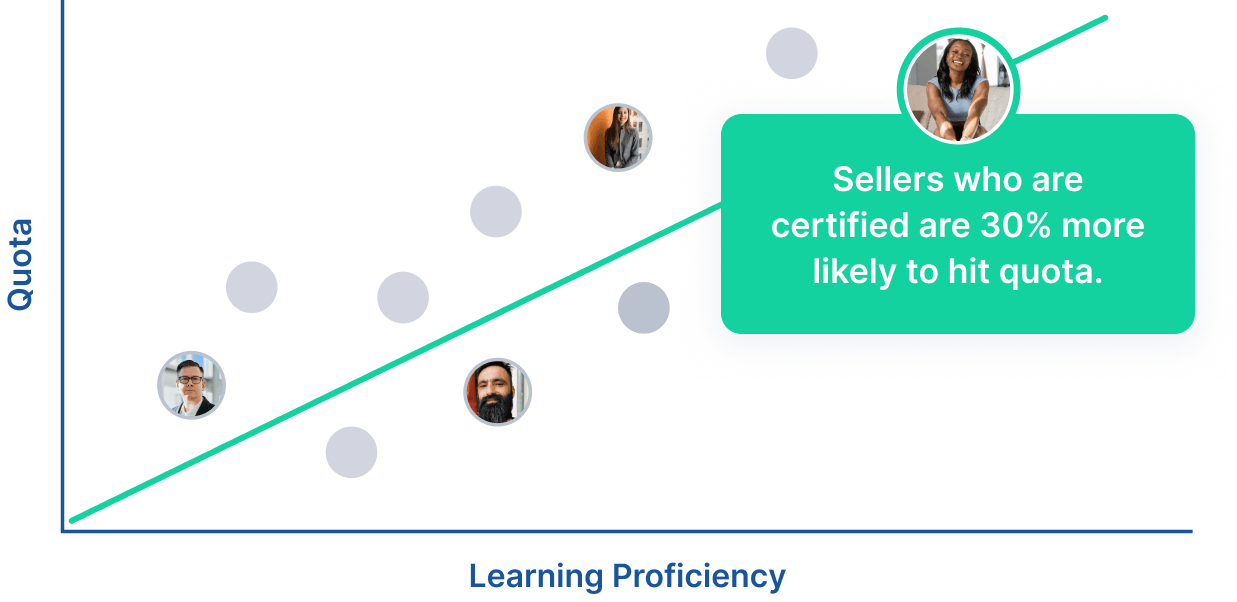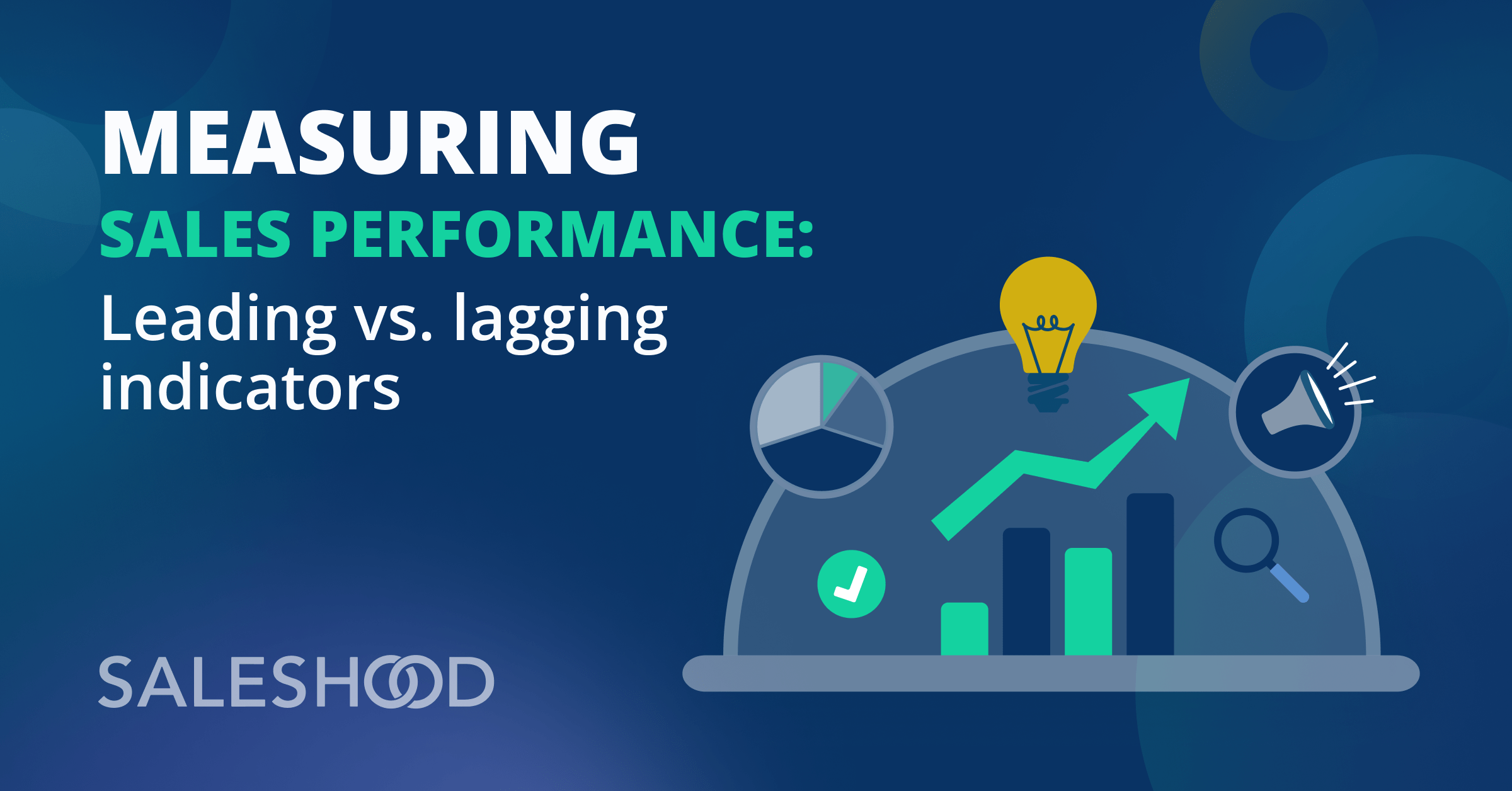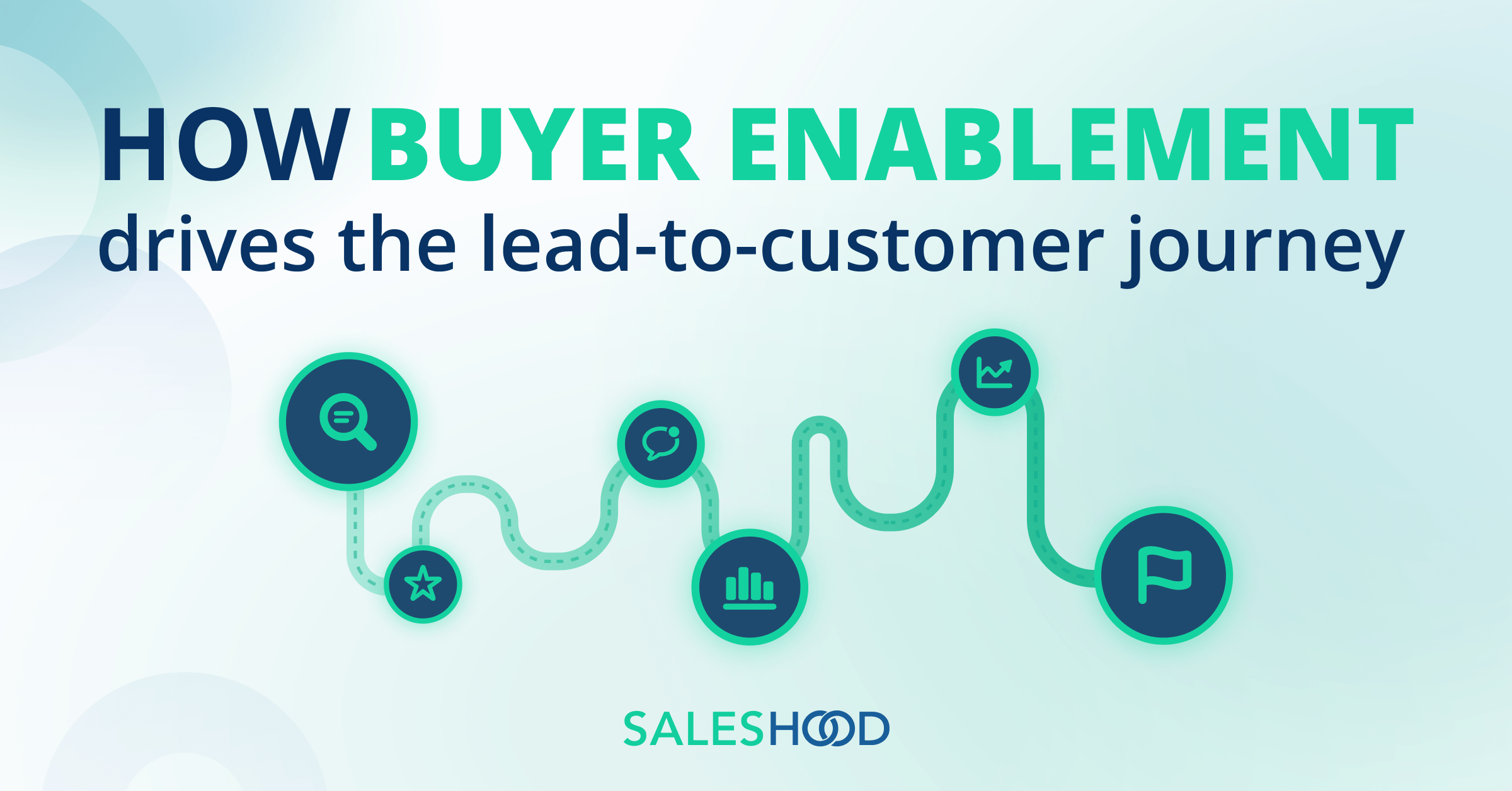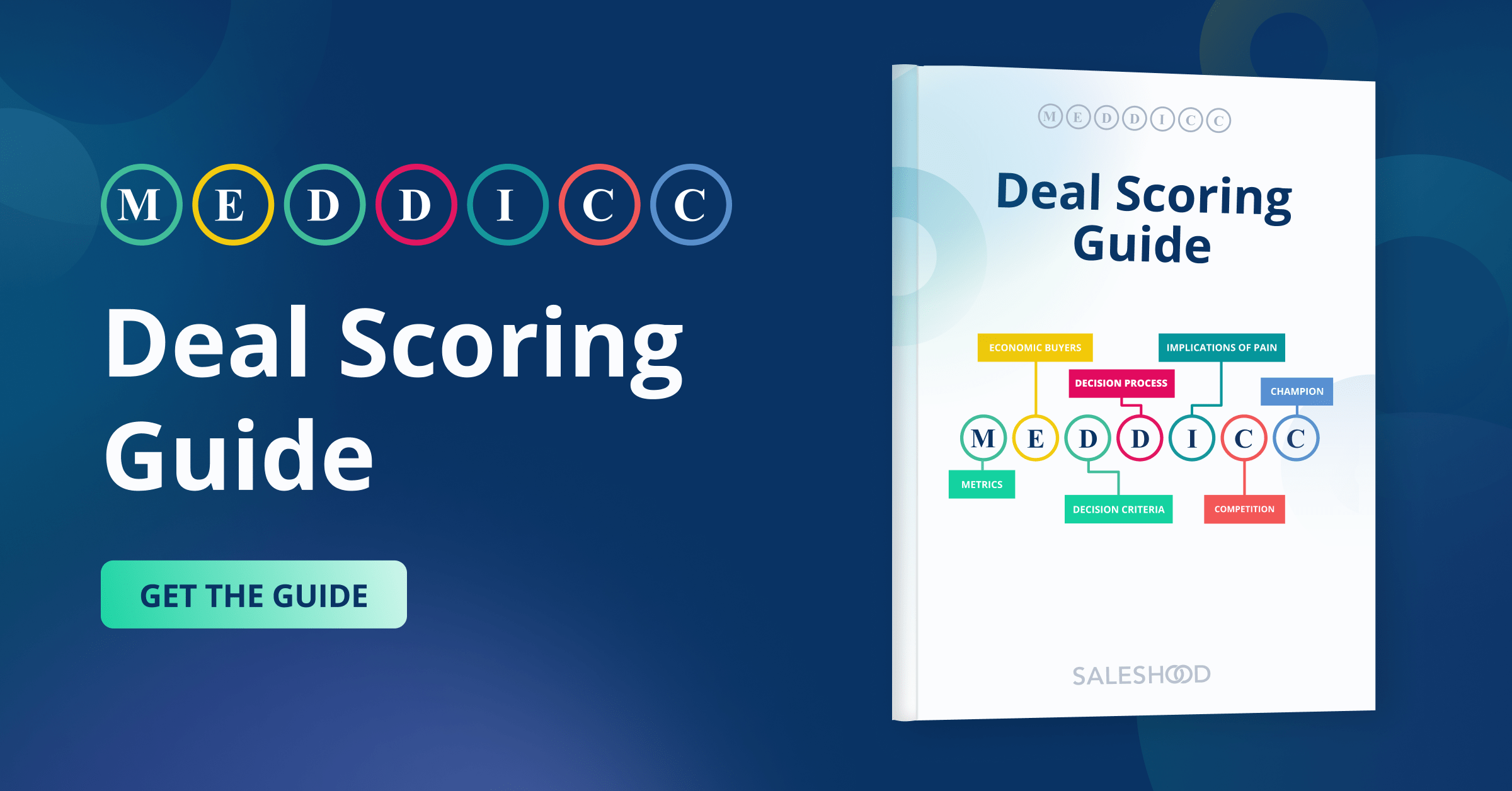There’s a question that everyone in sales enablement should know the answer to: How do your executive stakeholders describe what you do? Are you the glue that brings everything together? Are you the orchestrator? Are you the revenue multiplier? Or, are your organization’s stakeholders not sure exactly how your work is making a difference for the business? In this post, we’ll share insights to help you better communicate the impact of your sales enablement strategy, ensure you’re aligned with the C-suite’s priorities, and help you identify the sales enablement KPIs you need to measure to prove your impact. All to get everyone on the same page and set your enablement program up for success.
4 Tips to communicate with the C-Suite effectively
When it comes to communicating with C-suite executives, there are four important factors that are crucial to the outcome. Use these tips to have a meaningful conversation with your stakeholders.
Tip #1: Know their priorities
Before you can connect with anyone in the C-suite, you need to understand what matters to them. That enables you to align with their priorities and contribute in a meaningful way. Think about how to be in sync with business goals and have clarity on how your sales enablement initiatives fit into the big picture.
Tip #2: Give real examples
Always use examples and stories to support your point of view. As a sales enablement leader, you should be at the pulse of what’s happening. Use that knowledge and share what you know about what’s working in deals or what isn’t with a specific rep, team, or region. Give the executives color that they wouldn’t normally get.
Tip # 3: Put insights in context
Don’t just provide information that stakeholders already know or could access themselves. The numbers won’t tell the whole story. Go beyond reports, help them see the blindspots, and share specifics that correlate with the outcomes your organization is seeing. These specifics could be things like the strengths and weaknesses of managers and reps, how managers are effectively coaching their teams, or ways that pitches are changing or improving to get better results.
Tip #4: Get to the point
If you’re meeting with your CEO, and they ask a broad question about how things are going, you may have a couple of different data points to share. Knowing your audience matters here, because focusing on the points that get their attention will spark curiosity. Maybe you’ve rolled out new training and you have a completion rate of 82%. Since you’ve launched a new campaign, you’ve also generated over 3x pipeline this week. The latter point will matter most to the CEO.
Understanding stakeholder priorities
The sales and marketing world is drastically different now. For your sales enablement program to be successful, you have to understand the shifts that are taking place and what stakeholders across your organization are focusing on right now. Here’s a closer look at current trends.
Sales enablement KPIs for a CRO
Historically, data shows that many sales teams aren’t as effective as they could be. Most companies see the 80/20 rule play out, with 20% of their top salespeople contributing 80% of revenue. Plus, only 43% of sellers hit quota and just 69% of companies make their revenue goals. These data points present an opportunity for sales enablement as there’s a massive shift in hiring, from capacity to efficiency. While some are underperforming and struggling with sales efficiency, sales enablement can shine and take the opportunity to improve its programs. Often, cycle and ramp time is too long. Selling time is too short, and win rates are low. That’s going to need to change to support closer to 80% of reps hitting their number. You can show the CRO that you bring value to the table by finding ways to take some concerns that are coming up off their plate. You want to keep your eyes open, share key performance indicators for sales, and be prescriptive. This may mean, for example, exploring ways to ramp new hires faster, reinforcing sales training, and finding ways to work with other departments and support each other.
Sales enablement KPIs for a CMO
Eighty percent of sales interactions will occur in digital channels by 2025, and decision-makers prefer remote human interactions or digital self-service. But sellers aren’t always equipped to deliver the right information at the right time because processes are complex and content is hard to find. One of marketing’s primary concerns is this ongoing shift to digital engagement. CMOs want Sales Enablement leaders to answer these questions:
- How do we know our sellers are using our sales content?
- What sales content is working and what’s not working?
- How can just-in-time content be automatically prescribed in our CRM?
If you aren’t taking the time to collaborate with marketing and show them that you’re activating their content, you’re missing a key opportunity. Working with marketing plays a pivotal role in driving a better buying experience. However, don’t assume that they’re experts in sales enablement. They’re leaning on you for best practices and guidance on delivering the right information. Action items to discuss with marketing are ways to activate sales content and plays, crowdsourcing customer stories, and curating digital buyer sites. Beyond that, think about how you’re going to maintain and share everything between teams. Eighty-seven percent of sales training is forgotten by sales reps within a month. The goal is to minimize the ‘forgetting curve’ by keeping a drumbeat of training and layering in sales enablement over time.
Sales enablement KPIs for a CEO
Your CEO cares about messaging, repeatable plays, and culture. They want to see that there’s consistency. Be the person that’s carrying the flag, making sure everyone is on message and on board. What can you do to show your CEO you’re building a culture that supports sustainable sales growth? Be the catalyst to provide your sales team with the right assets and knowledge to convey your organization’s message, then make sure the message is conveyed in every customer conversation. With that in mind, take steps like running a sales pitch challenge, capturing video win stories, and highlighting the best practices of top sales performers. You can feed all of this back to your CEO so they can more easily understand how you’re supporting reps and what they’re accomplishing as a result.
Sales enablement KPIs for a CFO/CIO
Often, companies are struggling because they’re using many different systems and processes to work together to boost sales productivity and act like a sales enablement platform. Stitching disparate systems together like this doesn’t work. They’re using a learning management system (LMS) for training but it’s not optimized or designed to improve the customer buying experience. They have a content management system (CMS) to store content but that alone doesn’t help activate sales content. Companies are also trying to use business intelligence systems to aggregate data and correlate sales enablement activity to sales data, but this isn’t an easy task. The bottom line is, when there are too many systems that aren’t talking to each other and are not designed to solve revenue problems, those systems end up standing in the way of revenue growth. It’s crucial for sales enablement professionals to have a point of view on sales tool consolidation. Understand what sales tools are critical to your tech stack and what tools are redundant. It is possible to consolidate your stack and have fewer tools delivering more value to your teams and business. A purpose-built all-in-one sales enablement platform like SalesHood will get you there.
Bringing it all together: Gravitas and the power of storytelling
Sheevaun Thatcher, a world-class sales enablement leader, says the number one skill sales enablement professionals need to have is showing up with gravitas. Having gravitas means you’re someone to be taken seriously. When your leaders take you seriously, they’re more likely to take your advice, as well as invest in and support your ideas. People with gravitas command respect because they’ve taken the time to think about what they’re going to say and communicate their thoughts in a measured, calm and logical way. Ask yourself if this is a quality you’re showing up with when you’re communicating with stakeholders. That puts you in an even better position to use the power of storytelling to support your sales enablement program. When you can tell better stories that your stakeholders are invested in, you increase your chances of getting everyone in alignment.
You’re a click away from improving your sales enablement program
Grab our Sales Enablement Program Plan Template to better document your planning, share it with your stakeholders, and get valuable feedback. Putting your ideas in this format will help your communications be even more clear and concise. If you want to take the next step and learn how to enable your teams with modern training, coaching, and content, talk to one of our sales enablement experts. SalesHood powers fast-growing companies with our purpose-built, all-in-one sales enablement platform by activating revenue teams to improve sales effectiveness and efficiency. Watch our ‘How to WOW Your Stakeholders’ keynote replay to get more tips, templates, and recommendations to impress your stakeholders.



